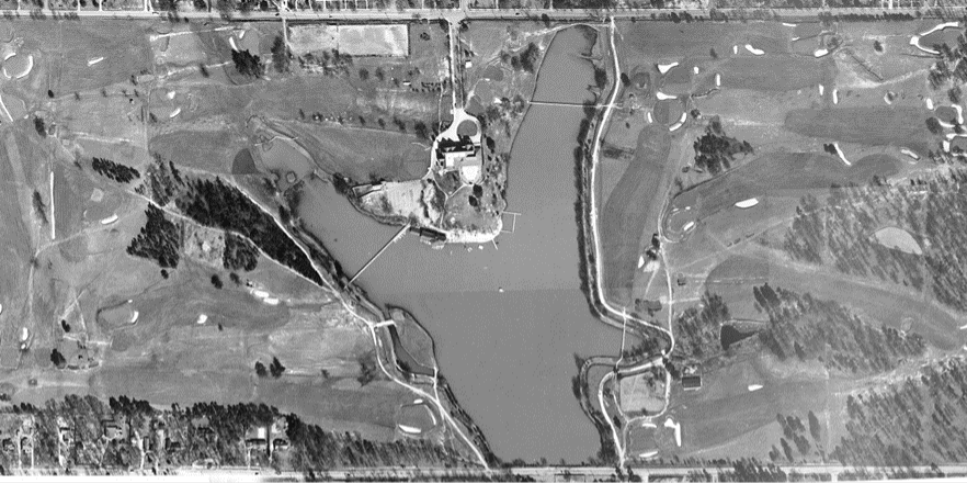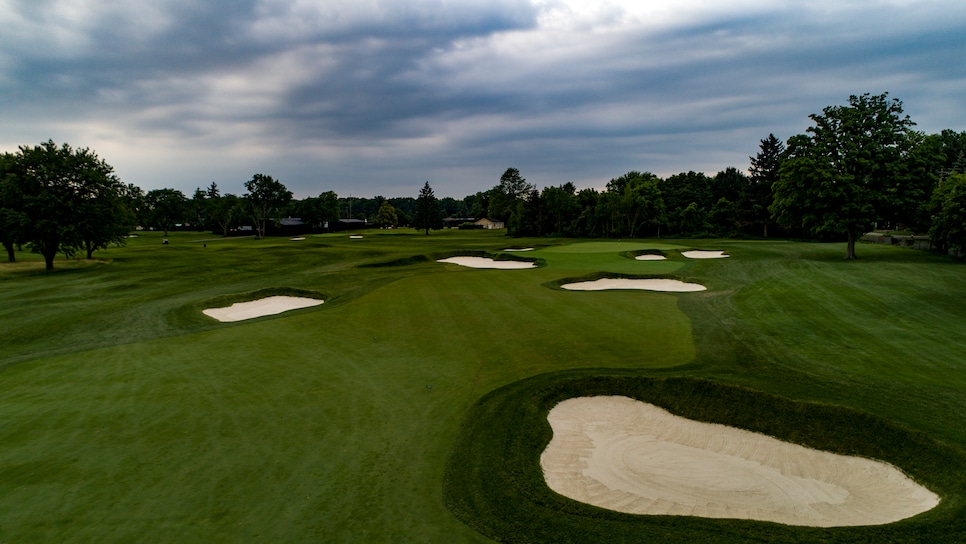If there’s been a dominant theme in the world of golf course renovation the past 20 years, it’s the desire of a new generation of club members to hit the “reset” button on their historic courses and return to pre-World War II versions of their architecture. Venerable East Lake Golf Club in Atlanta, host of the annual Tour Championship and the venue Bobby Jones grew up playing, is the latest to reach into the past.
Immediately after the 2023 Tour Championship next weekend, East Lake will close to undergo its most significant remodel since 1994. Conducting the alteration will be Andrew Green, whose comprehensive work bringing back the Donald Ross aesthetic and playing character to Oak Hill Country Club’s East course was on dramatic display earlier this year during the PGA Championship. If Oak Hill is a precedent, East Lake will continue to be a formidable course for the world’s best players but will look little like it does now.
PGA Championship 2023: How Oak Hill will display the work of golf’s hottest new architect
East Lake opened in 1908 and was the home of the Atlanta Athletic Club until the organisation moved in the late 1960s to its current home in Johns Creek, in the city’s northern suburbs, leaving the club and a portion of its membership behind.

Three decades of wear and changing attitudes towards vintage architecture inspired a reassessment of that model.
“The previous renovation we’re working off was in 1994, so we’re pretty deep into the lifecycle of the greens, bunkers and irrigation,” says general manager Chad Parker. “We knew it was time – actually past time – to do something. We used the opportunity to explore what else was possible and what other kind of thinking was out there.”
What’s out there is a more affirmative embrace of the course Ross designed (the Athletic Club operated a second, adjacent Ross-designed course from 1925 until it was sold and razed in the mid-1960s). After interviewing a number of architects and asking them to express their vision of how the course might meet a series of challenges – to recapture the Ross identity; to improve infrastructure functionality; to address arboreal issues; to continue to be compatible to the Tour Championship while making the course less exacting for members – the committee selected Green, who in the past six years has helped America’s 100 Greatest and Second 100 Greatest Courses like Inverness, Scioto and Wannamoisett (in addition to Oak Hill) rediscover their Ross roots.
“We wanted to see if we could recapture more of the feel of the golden age of East Lake,” Parker says. “That’s where we think Andrew is going to be able to work his magic.”

The inspiration for the redesign will start with an aerial photograph from 1949 [above]. The picture shows a course with broad fairways, fewer and smaller bunkers than exist now and a different bunkering scheme that afforded more room to run balls onto greens. Less is known about the profiles of the putting contours that existed in the 1920s and ’30s, or what depths the bunkers were set. East Lake isn’t releasing a great deal of hole-by-hole renovation detail because Green will fine-tune the shape, elevation and edging of the greens and bunkers in the field as he builds them.
It’s a good bet the greens will, as a collection, sit lower than they currently do in relation with their surrounds and tie in more intimately with the bunkers. The renovation committee travelled to Wannamoisett in Rhode Island to look at that club’s greens, which Green graded and expanded in 2021, and the club left impressed with the added hole locations recaptured along the edges and corners. They also visited Inverness and Scioto in Ohio to get a feel for Green’s interpretation of Ross’ bunkering. Parker says Wannamoisett’s greens and Inverness’s bunkers will be the template for the East Lake remodel.
As part of the architectural selection process, the East Lake committee asked the three finallists – Green, Rees Jones and Tyler Rae – for proposals on how to re-establish the Ross qualities at three specific holes: seven, eight and nine. While intrigued by each proposal, they were particularly impressed with Green, who in Parker’s words, conducted a “master class” on Ross and the potential of East Lake.
.jpg.rend.hgtvcom.966.644.suffix/1674835518720.jpeg)
“We were walking down the seventh fairway with our committee and he was over by himself,” Parker says. “He stopped and snapped a picture of the green from about 150 yards in the fairway, then started to illustrate it on his iPad. He said, ‘Look at this – this view is your Pacific Ocean. The clubhouse is starting to reveal itself, you’ve got the lake in the background, the Atlanta skyline,’ and he just basically drew his vision in front of us.”
The club will work with the PGA Tour and solicit input when needed, but no significant concessions are being made to the design for the Tour Championship (including no additional tees) aside from upgrades in turf conditions, drainage, vehicle ingress/egress and hospitality areas. The emphasis, smartly, will be on improving member experience.
With its Bermuda rough, hill-climbing holes and insistence on aerial golf, East Lake can be a relentless outing for players who don’t carry single-digit handicaps. The conversion from the cushiony Meyer zoysia fairways to firm Zorro zoysia will help by adding additional distance via roll-out on drives, meaning golfers will hit shorter clubs into greens. The greens will be converted from Mini-Verde Bermuda to TifEagle Bermuda, and Hydronics tubing will be installed beneath each putting surface to give the maintenance staff the ability to control root temperature (by circulating either warm or cold water through the tubes) to achieve more consistently firm and even green conditions from season to season.

One of the most intriguing features from the 1949 aerial is what appears to be a long, slender trench bunker diagonally splitting the 17th fairway into two sections. Recreating it would turn what’s currently a fairway wood/hybrid tee shot followed by a wedge or short iron to a tabletop green into a hole with tempting options for both tour players and members. Though non-committal about details, Parker says, “You can expect that you might see something inspired by that [bunker] on the new 17th, for sure.”
What we can also expect, in time for the 2024 Tour Championship, is a course that will appear more in sync with its historical roots, perhaps one that looks more provocative and imposing yet plays friendlier to handicap golfers.
The Rees Jones renovation in 1994 launched East Lake onto the Golf Digest 100 Greatest Courses in America ranking where it resided for 16 years, but it has since slid backwards to where it currently sits 150th (down from 61st in 2011-2012). Green’s Ross remodel, channelling the revivalist spirit of the times, has a chance to do the same.

